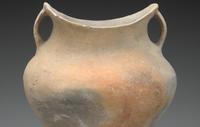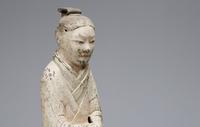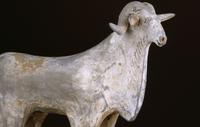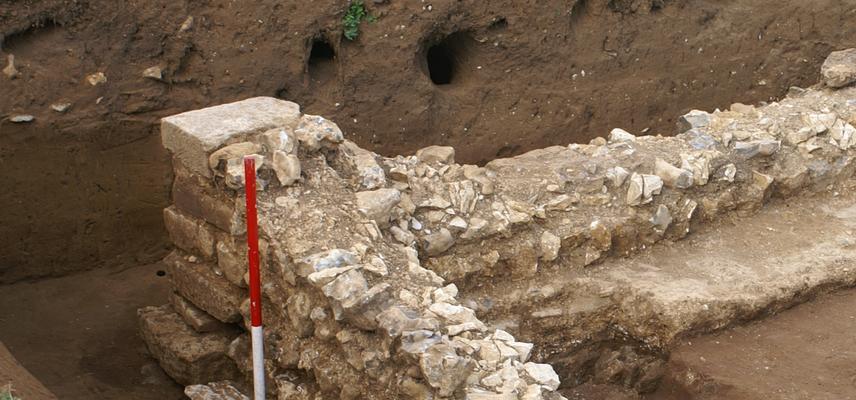Archaeology of Asia Stream

This stream focuses on the archaeology of Asia, with a particular focus on China from the Neolithic to the Qing dynasty. Students will have the opportunity to engage with traditional and new research methods and approaches in order to analyse archaeological evidence and practice, and the major cultural developments in the region that had far-reaching impacts.
Your taught modules and independent research will allow you to deepen your knowledge and understanding of archaeological perspectives on a range of themes, from social connectivity and human-environment interaction, to the innovation of ceramic production and trade.
The small-group teaching and learning provides you with the opportunity to explore key sources of evidence and approaches in order to investigate and debate a wide range of subjects, such as:
- craft production and trade
- ceramic production and specialisation
- mortuary archaeology
- emergence of agriculture
- settlement archaeology
- early cities and urbanization
- development of writing
- political unification
- history of archaeology in China
- archaeological theory and Chinese archaeology
- environmental archaeology
Students also benefit from the Oxford Centre of Asian Archaeology, Art and Culture (OCAAAC) in the School of Archaeology. This is an organization that fosters academic exchange, innovative research and specialized training in the fields of archaeology, art history and cultural heritage in continental Asia.
All MSc in Archaeology students take the mandatory Archaeological Principles: Data & Theory. You will also take two core modules offered within Archaeology of Asia: One List A taught in the first term, and the other from List B taught in the second term. The fourth module is your option module (also from List B), also taught in the second term; this is chosen from all available List B modules in any stream, or a module from the MSt in Classical Archaeology. In some circumstances a subject taught in the MSc in Archaeological Science may be taken as your option module, however this is taught over two terms.
Please note that the modules and streams listed on this website are indicative of the typical offerings and are subject to review each year. Whilst every effort is made to offer the full variety of modules/streams this is not possible to do every year. This is due to the fact that some modules/streams are dependent on student numbers to ensure an appropriate quality of education; timetable clashes; staff availability; etc. We aim to keep the website as up-to-date as possible but we recommend that you seek specific advice from admissions_masters@arch.ox.ac.uk on module/stream availability.

This course provides a survey of the archaeology of Ancient China from the early Neolithic (ca. 10,000 BP) through the Qin period (221-208 BC). Each lecture is arranged around a particular set of questions as well as a time period and/or region. In this fashion, this course explores the major cultural developments, focusing on the most important finds in greater detail, while at the same time discussing general archaeological questions and approaches.
The class commences by providing an overview of the environmental background as well as the history and organizational structure of archaeological work in China. After setting the stage in this fashion, the course will proceed chronologically, simultaneously covering questions of the emergence of agriculture, settlement patterns, burial practices, beliefs and ritual, craft production, the development of writing, complex societies, urbanization, and finally political unification.
Module Co-ordinator: Dr. Anke Hein

Ceramics have long garnered much attention in archaeological research as being present in a considerable percentage of archaeological sites worldwide and often chronologically sensitive as well as reflecting exchange patterns over short and long distances. East Asia and the Pacific Region in particular have seen major developments in ceramic technology from the very earliest ceramics of the world being produced there almost 20,000 years ago to historic-period advances in porcelain and glaze making. Furthermore, there is evidence for both ceramic products and underlying technologies having been exchanged over large areas for several millennia.
This option focuses on the emergence and development of ceramics in the prehistoric and historic Asia Pacific region, providing both general training in ceramic analysis and the specific context needed by students wishing to specialize in the study of the region. From the first modern archaeological excavations in China —which uncovered remarkable prehistoric assemblages of elaborately painted earthenware—to long-standing research on Imperial kiln sites and the recent discovery of the earliest pottery in the world, archaeological ceramics research has played an important part in uncovering the region’s past. Traditional archaeological approaches will, therefore, form the foundations of the course. However, students will also be shown how archaeological interpretations of pottery in the past can be shaped within frameworks drawn from ethnographic, ethnoarchaeological, and historical research. In addition, by connecting Archaeological Materials component of the MSc course, students will be given a general introduction to suitable techniques for the analysis of both high- and low-fired ceramics.
The course will consider how geography and climate help us to contextualize early finds and understand the character of later production. Focusing on concrete examples from various periods, the course will show how ceramics can help us to explore innovation, specialization and centralization in production, to both define and transgress the boundaries of cultural units, and to investigate the character of long-distance exchange.
The course is taught by several specialists who will provide students with insight and perspective into a wide range of research theories and methodologies. Within this framework, the students will have the opportunity to develop a framework for a research project of their own that may lead to a MSc dissertation or a DPhil thesis.
Convenor: Dr. Anke Hein

Please note, there will be changes to this module.
The forests, grasslands, and deserts of Eurasia create an ecological corridor across the northern half of the continent, bridging an apparent divide between East and West. Understanding the patterns of social connectivity, mobility, and human-environment interaction in this region is currently a major focus of interdisciplinary research.
Addressing itself to students seeking a broader context for developments in China, Europe or the Classical world, this course introduces the archaeology of northern Eurasia from the beginning of the Holocene to the rise of the first nomadic empires. It explores the transformation of Eurasian societies, the transmission of technologies and ideas, and the challenges of working between grand narratives and archaeological realities.
Convenors: Prof Rick Schulting and Dr. Anke Hein

This module presents the latest (bio)archaeological research into the origins and establishment of agriculture in western Asia, focussing on the Epipalaeolithic-Neolithic but also considering case studies from subsequent periods to illustrate the long-term development of farming. Through lectures, tutorials and museum-based classes we set out the chronological and material culture framework to assess the direct archaeobotanical and archaeozoological evidence for domestication relationships and management ecology in different ecological settings and through time. Geographically we focus not only on the ‘Fertile Crescent’ (the arc of relatively high rainfall extending from the southern Levant in the south-west through Syria, SE Turkey and N Iraq in its central zone and down through the Zagros mountains of Iran in the east) but also on adjacent regions (e.g. central Anatolia) that are proving equally important to the origins story and/or to its longer term consequences.'
Convenors: Prof. Amy Bogaard and Dr. Mike Charles
The Asia-Pacific zone today is home to over half of the world’s population, and with it over half of the planet’s human diversity. This course brings together the latest research in archaeology, palaeoanthropology, genetics, linguistics, and other historical disciplines to uncover how this diversity emerged in the deep human past. We begin the course by looking at the extreme ecological and cultural diversity that characterises the Asia-Pacific before turning to the history of archaeological research on early human dispersals in the region. Next, we go all the way back to the early Pleistocene period and examine the distribution of fossil primates and hominins in the region. We then move forward in time to explore the multispecies worlds of the Middle Pleistocene; a time when Homo erectus, Neanderthals, Denisovans, and the diminutive Homo floresiensis and Homo luzonensis overlapped and sometimes even interacted with our own species, Homo sapiens. Next, we follow the paths of Homo sapiens throughout the diverse environments of mainland Asia, as they moved into arid deserts, humid rainforests, high altitudes, and cold latitudes. Our focus will then shift to how our species dispersed into the islands of Southeast Asia and then continental Australasia. Finally, we venture to far-flung shores, uncovering evidence for the earliest dispersals of people out of Southeast Asia and into the remote Pacific Islands during the Late Holocene. Throughout the course — canvassing the human experience across millions of years and tens of thousands of kilometres — our focus will be on the expanding repertoire of novel ecologies that humans came to inhabit, as well as how humans began to change and reshape these spaces, creating new anthropogenic worlds in which to live.
Convenor: Dr Dylan Gaffney
Previous Dissertation/Essay Titles
- Identities in Felt and Woven Wool: Materiality Based Approaches to Bronze Age Textiles from Xinjiang, Uyghur Autonomous Region
- Walls for war? A comparative and multi-faceted approach to the function of walls in Neolithic China
- The comparative analysis of the tombs of Nanyue Kingdom - using Guangdong and Guangxi as examples
- Majiayao, Qijia, and Xindian: Changes in Ceramic Production from the Neolithic through the Middle Bronze Age
- Animal-human relationships in the Mongolian Altai: a view from the petroglyph complex Tsagaan Salaa/Baga Oigor






